Flotsam – January
Left Open Hatch Renders Indian Multi-billion SSBN Unusable
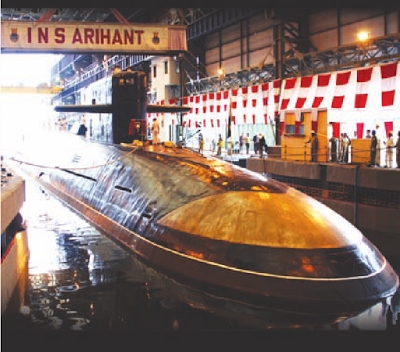
As it became known only at the beginning of January through a report in The Hindu, India’s third largest daily newspaper, an incident on the only Indian nuclear submarine with ballistic missiles (SSBN) INS Arihant occurred at the beginning of 2017. While the submarine had been moored in the port, the engine rooms had been flooded through an unintentionally left open hatch in the aft section, causing severe damage, which meant that the Indian Navy had to do without its only SSBN completely during the subsequent clean-up and repair work, which lasted for more than 10 months. In order to prevent corrosion caused by the ingress of water, a whole series of pipes, in particular the secondary circuit of the pressurized water reactor, had to be completely replaced.
With such a modern nuclear submarine as the Arihant, one can normally assume that there is a form of safety system that indicates open hatches or closures in such a vital area as the propulsion section. Either this system has failed completely or there was a negligent mishandling. In any case, the incident is an excellent example of a minor cause that will have a major impact. An unintentionally left open hatch has ruined the operational readiness of the multi-billion-dollar submarine for months. In addition, this incident is reminiscent of U 43 (Kptlt. Wolfgang Lüth) of the Kriegsmarine, which on February 4,1941, sank on the pier in Lorient by an incorrectly closed torpedo hatch. Afterwards, a quarter of a year was required to restore the U-boat.
According to the report, it was not until June 2017, when the Indian government wanted to use the Arihant as a military power demonstration in the wake of the escalating border conflict with China on the Doclam Plateau in the Himalayas, that it became aware of the fact that its only SSBN was not even ready for deployment. On 16 June, Chinese troops moved forward to construct a road on the barren, remote plateau of Doklam, claimed by both Bhutan and China. The Buddhist kingdom of Bhutan, which itself has only a small army of about 6,000 soldiers, then called for the help of its ally India, which two days later sent 270 soldiers to Doklam to prevent the road from being built. For just over nine weeks, troops of the nuclear powers India and China were hostile to each other on the plateau. There are reports of fights with iron bars and stones where several soldiers on both sides were injured. On August 28, both sides then agreed to withdraw their troops, thus ending the immediate danger of a war between India and China.
It seems very strange that India’s political leadership only found out in the wake of a major crisis that its only SSBN has not been operational for months, as this would indicate serious problems with the checks and balances in India. To ensure that only India’s top political leadership has access to its nuclear weapons, nuclear warheads have hitherto been stored separately from their carrier systems in India. In order to be able to react to nuclear threats in good time, however, a mature system for the command and control of nuclear weapons between the government and the military is necessary, which in this case could have failed completely. However, if India wanted to use its SSBNs as a second strike weapon for deterrence in the future, it would have to abandon its previous principle of storing warheads and missiles separately anyway. For this form of deterrence to work, a nuclear submarine with fire-ready nuclear weapons must be undetected at sea. After all, the submarine cannot only call at its port after a possible first nuclear strike on India has taken place, and only then take over life nuclear weapons for a second strike.

INS Arihant
First nuclear submarine developed and built in India. Another unit of this class, the INS Arighat has already been launched and is scheduled to be commissioned at the end of 2018. Two more submarines are still under construction
|
Year of construction |
ab 1998 |
|
Shipyard |
Shipbuilding Centre in Visakhapatnam |
|
Displacement |
6.000 t (likely to be more) |
|
Length |
111 m (364 ft) |
|
Beam |
15 m (49 ft) |
|
Draught |
11 m (36 ft) |
|
Propulsion |
Pressurized Water Reactor (83 MW) , 1 propeller |
|
Engine Power |
47.000 PS (70 MW) Turbine |
|
Speed |
15 kn / 24 kn submerged |
|
Range |
only limited by provisions |
|
Diving depth |
350 m (1,150 ft) (estimated) |
|
Fuel |
40 percent enriched uranium fuel rods |
|
Armament |
6 bow torpedo tubes, 4 ballistic missile tubes for |
|
Complement |
95-100 |
At the end of the 1960s, India had already begun to build up its own submarine force with submarines acquired in the Soviet Union. As early as 1971, following the impressions of the Third Indian-Pakistan War, Indian researchers began developing a nuclear reactor for installation on a submarine. At the latest since India officially became a nuclear power in 1974, it could be assumed that India developed nuclear submarines as carriers for its nuclear weapons to deter Pakistan and China.
From 1988 to 1991, the Indian Navy leased the Russian nuclear submarine K-43 of class Project 670 (NATO designation: Charlie Class) to gain experience in the operation and use of nuclear submarines. In the 1990s, the project of an Indian nuclear submarine then took on very concrete forms under the name ATV (Advanced Technology Vessel). In 1998, at the Shipbuilding Centre in Visakhapatnam on the Gulf of Bengal, the construction of the hull for the first Indian nuclear submarine, called Arihant (composition of the Sanskrit words Ari=enemy and hant=destroy), was started. At the same time, the development of its own pressurized water reactor was pushed ahead and work began on the construction of a prototype on land. This became critical for the first time on 11 November 2003. After a trial run of three years, it was declared ready for operation, so that construction of the Arihant reactor could begin.
With the help of Russian submarine designers, an own Indian design based on Russian submarine technology was realized. After a development and construction period of more than 10 years, the launch took place on 26 July 2009 and the test and equipment phase of the submarine, which was expected to last several years, could begin. Initially, the boat was extensively tested in port and its nuclear reactor was installed. This became critical for the first time on 10 August 2013 – the heart of Arihant had begun to beat. On 13 December 2014, the boat left for a longer sea trial with weapon tests and was put into service in August 2016 without much fuss
When looking back at incidents on Indian submarines in the past, together with the whole series of incidents involving Indian Navy surface units, there may well be doubts about the maintenance of the units and the training of personnel, and thus about the overall sustainability of the Indian SSBN programme. Subsequently, a brief overview of special incidents on and with Indian submarines of the last ten years will be given.
01 December 2017
A commission of inquiry of the Indian Navy is established after damage to the sonar dome of the INS Chakra (project 971 or Akula II class) leased by Russia for 10 years, which could have been caused by a collision.
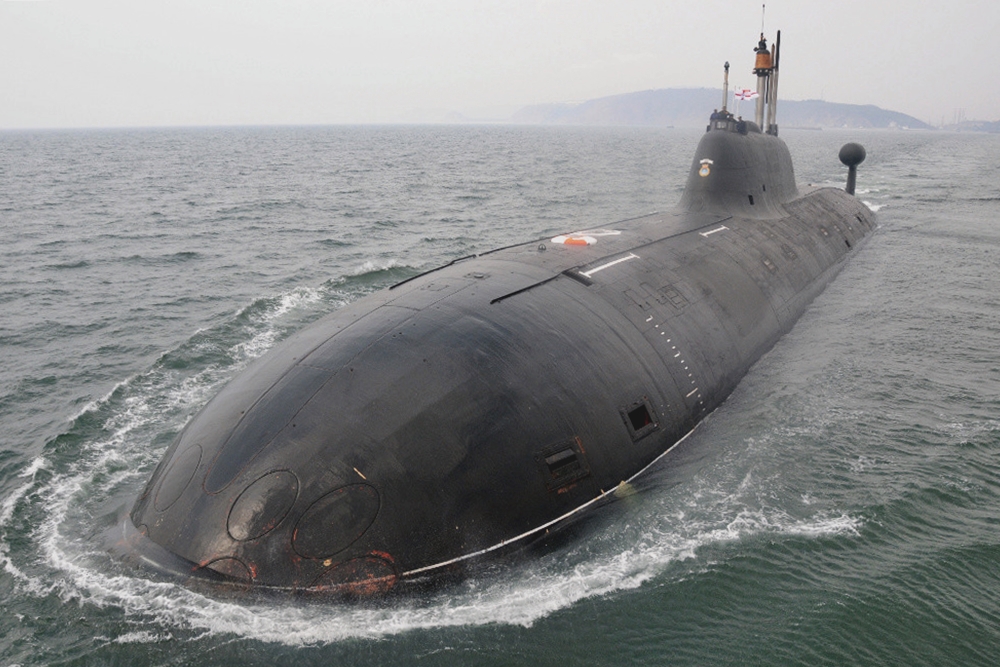
Photo: Indian Navy, CC BY 2.5 in
19/20 February 2015
Off the coast of Mumbai, there was a collision between the Indian submarine INS Sindhughosh (project 877 Paltus or Kilo class, pictured below) and a fishing vessel with minimal damage to the submarine. The collision occurred on pitch dark night while the submarine was on an exercise.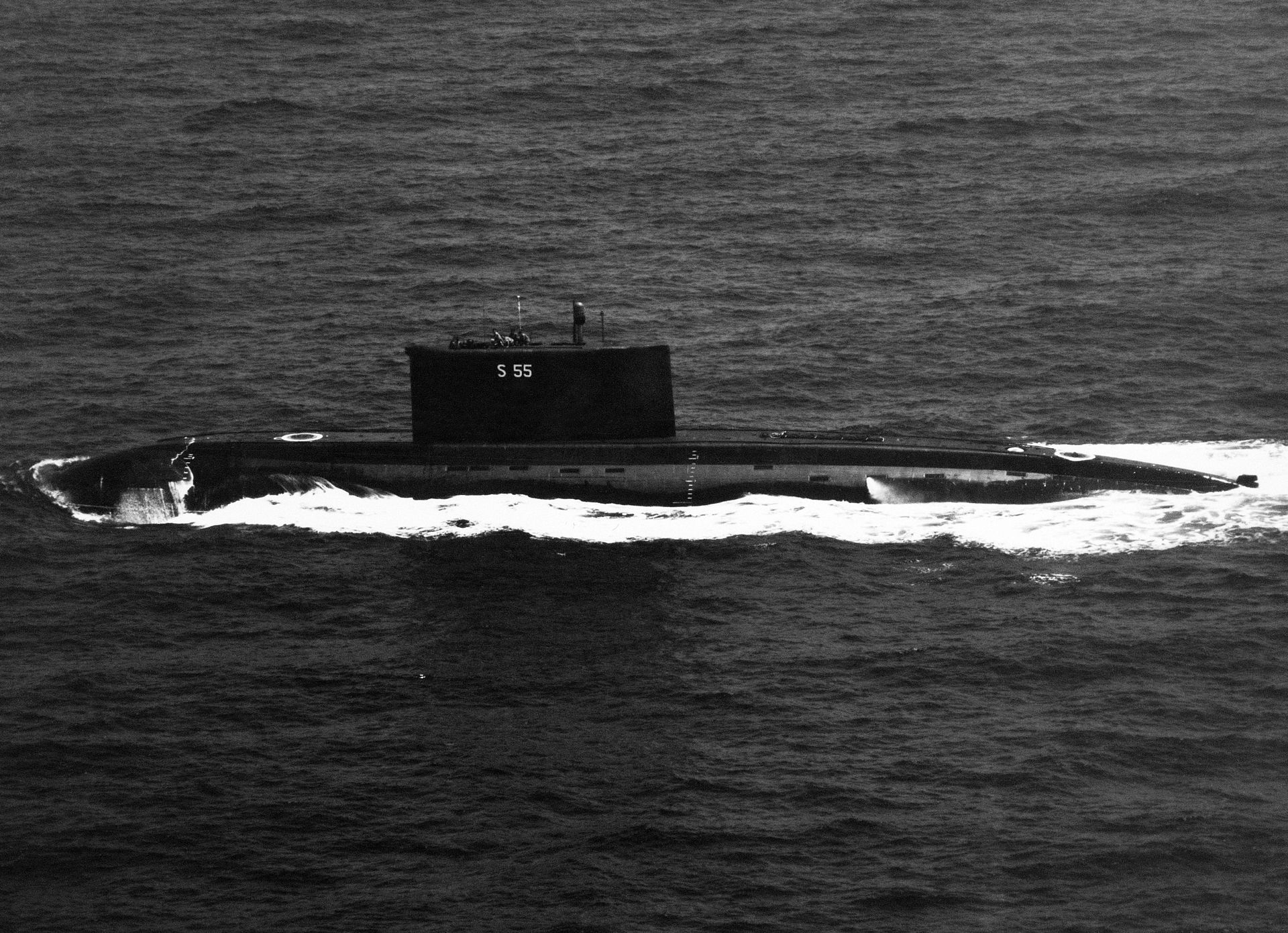
26 February 2014
A fire broke out on the Indian submarine INS Sindhuratna (project 877 Paltus or kilo class) due to a defect in the batteries. The boat was just after a complete overhaul on a sea trial near Mumbai. Two officers of the boat were killed in the fire, seven crew members suffered smoke poisoning and had to be taken to the hospital in Mumbai by helicopter.
17 January 2014
When returning to their base in Mumbai, the INS Sindhughosh ran aground at low tide and couldn’t manage to come free on its own.
14 August 2013
While the INS Sindhurakshak (project 877 Paltus or Kilo class, pictured below) was moored in Mumbai, a violent explosion occurred after a fire on board. Subsequent investigations by the Indian Navy showed that this was most likely triggered by ammunition on board. Of the 18 people on board at the time of the accident, only 11 bodies could be recovered. Six of these could be identified. The explosion, which also slightly damaged the adjacently moored Sindhughosh, caused the Sindhurakshak to sink at the pier and, after its raising – contrary to the hope of the Indian Navy – could not be restored, so that it was scuttled to a depth of 10,000 ft in the Arabian Sea in June 2017.
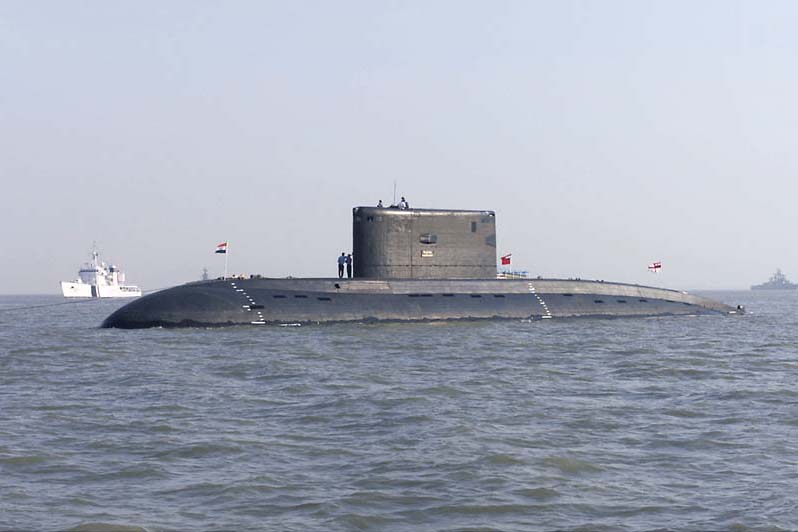
26 February 2010
A fire on board the INS Sindhurakshak killed one crew member and injured two others. This fire was also caused by a defect in the batteries.
10 January 2008
The INS Sindhughosh collided with the freighter MV Leeds Castle during a fleet exercise and suffered minor damage to the sail and periscope.
At this point it should not go unmentioned that the Indian Navy also has four submarines designed in Germany in service. In India, they are referred to as the Shishumar class, while the German term is HDW type 1500. This was an enlarged version of the type 209 developed by Ingenieurskontor Lübeck and exported in large numbers. A special feature of the type 1500 is a rescue capsule for the crew in front of the sail. In addition, the pressure hull has been designed stronger than class 209, which allows a higher diving depth, but at that time also required HDW to purchase new fixtures for pressure hull construction.
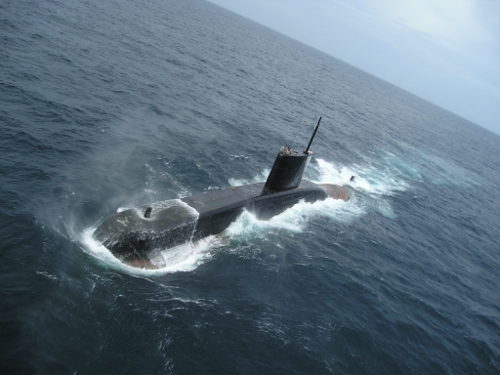
On 11 December 1981, an agreement was signed between India and HDW covering the construction of four boats. Of these, two were to be built at HDW in Kiel and two at Magazon Dock Limited (MDL) in Mumbai from parts supplied by HDW. The contract also provided for the Indian crews to be trained in Germany. The construction of the two boats at MDL brought the Indian shipyard to its limit. There were additional costs of 20% and a delay of 15 months.
|
HDW-submarines |
laid down |
launch |
commissioning |
|
INS Shishumar |
05/01/1982 |
12/13/1984 |
09/22/1986 |
|
INS Shankush |
09/01/1982 |
05/11/1984 |
06/20/1986 |
|
MDL-submarines |
laid down |
launch |
commissioning |
|
INS Shalki |
06/05/1984 |
09/30/1989 |
02/07/1992 |
|
INS Shankul |
09/03/1989 |
03/21/1992 |
05/28/1994 |
In July 2016, a contract was signed for the modernization of the two submarines built in India. The life of the boats is to be extended by ten years for about €31 million. Launchers for UGM-84L Harpoon missiles are to be installed and the corresponding training of Indian crews and technical support is to be ensured.
Weblink:
